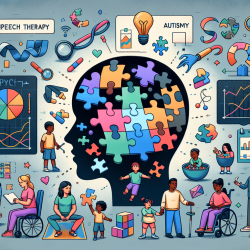Introduction
In the realm of speech-language pathology, understanding the genetic underpinnings of communication disorders is crucial for developing effective therapeutic strategies. Recent research has uncovered the significant role of the Myt1l gene, particularly its haploinsufficiency, which leads to obesity and multifaceted behavioral alterations in mice. This discovery opens new avenues for speech therapists to enhance their practice by integrating genetic insights into their therapeutic approaches.
The Role of Myt1l in Behavioral Alterations
The study titled "Myt1l haploinsufficiency leads to obesity and multifaceted behavioral alterations in mice" provides a comprehensive analysis of the effects of Myt1l deficiency. The research reveals that Myt1l is essential for normal brain function and organismal survival. Mice with Myt1l haploinsufficiency exhibited increased body weight gain and a range of behavioral changes, including impaired habituation learning and altered socio-affective communication.
Implications for Speech Therapy
Understanding the genetic basis of communication disorders can significantly impact therapeutic practices. The findings from the Myt1l study suggest that genetic factors can influence behavioral traits related to communication, such as social interaction and vocalization patterns. Speech therapists can leverage this knowledge to tailor interventions that address the specific needs of children with genetic predispositions to communication disorders.
Encouraging Further Research
While the study provides valuable insights, it also highlights the need for further research to explore the full spectrum of Myt1l's impact on communication and behavior. Speech therapists are encouraged to stay informed about ongoing genetic research and consider collaborating with geneticists to develop comprehensive intervention plans. This interdisciplinary approach can lead to more effective outcomes for children with communication disorders.
Conclusion
The Myt1l gene plays a pivotal role in shaping behavioral traits that are crucial for communication. By integrating genetic insights into speech therapy practices, practitioners can enhance their ability to address the complex needs of children with communication disorders. To read the original research paper, please follow this link: Myt1l haploinsufficiency leads to obesity and multifaceted behavioral alterations in mice.










